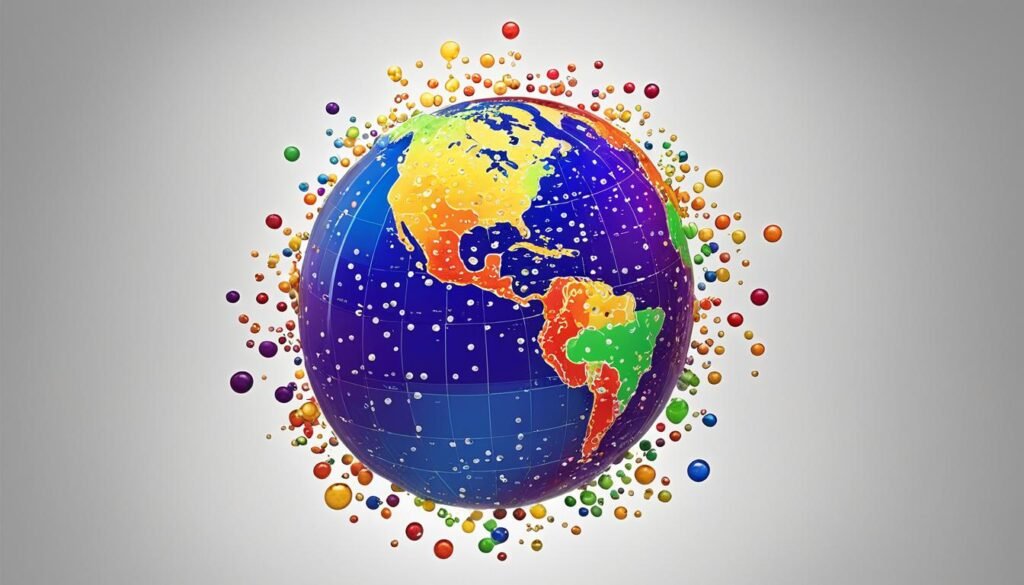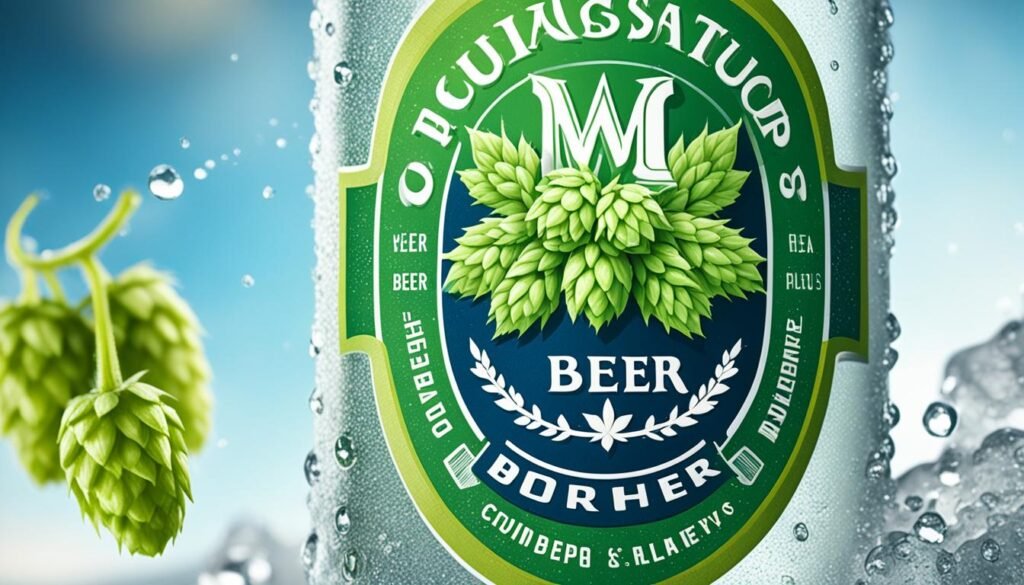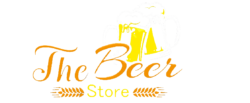The spirited quest to identify what is the No 1 beer World has beer aficionados and casual drinkers alike exploring an array of top rated beer brands and the most popular beer companies that have made a mark on the global stage. Beer, long celebrated as the communal beverage of choice, has continuously evolved to cater to an ever-expanding palette of consumer preferences. This article embarks on an effervescent journey through the beer industry, unveiling not simply a top brew, but delving into the stories and market forces behind the labels that have become household names.
Key Takeaways
- Understanding the top rated beer brands provides insight into consumer tastes and market trends.
- The title of what is the No 1 beer World is not static, reflecting the dynamic nature of the industry.
- The global presence of the most popular beer companies underscores their impact on economic and cultural landscapes.
- Local microbreweries, as well as international giants, play significant roles in defining premium beer choices.
- Recognizing celebrated labels involves considering both consumer loyalty and global sales performance.
Exploring the Majesty of the Beer Landscape
The global beer market serves as a testament to the diverse tastes and fervent interest of aficionados around the world. In 2021, its immense economic impact was marked by a valuation of nearly USD 629.9 million, signaling a vibrant industry bursting with opportunities for exploration and investment. This landscape is continuously shaped by an array of premium beer choices, each with its own unique flavor profile and brewing heritage, catering to a spectrum of palettes and occasions.
Keeping a finger on the pulse of this dynamic and ever-evolving market demands a thorough understanding that only an ultimate beer guide can provide. With such a guide, enthusiasts and newcomers alike can navigate through the kaleidoscope of options. Urbanization and rising disposable incomes have ushered in a wave of craft brewery success stories, changing the face of beer consumption patterns and paving the way for luxurious and high-quality brews to become household staples.
- Urbanization driving the proliferation of craft beer establishments
- Rising disposable incomes empowering consumers to indulge in premium selections
- Unwavering consumer loyalty fortifying market positions of leading breweries
As we flit from continent to continent, the global beer market reveals its intricate tapestry – each thread representing unique brewing methodologies, enchanting stories behind the brands, and the profound connection between culture and commerce. This vibrant industry promises to quench the thirst of global citizens with personalized and tailored premium beer choices, fostering communities and economies alike.
An Introspective Look at Beer Consumption Trends Globally

Delving into the global beer market, we uncover the sways of trending beverage preferences that significantly shape the industry. Notably, the surge in craft beer sales and the gravitation towards premium beer choices manifest a pivotal shift in consumers’ palates. The ripple effect of this shift is evident in both micro and macro scales, painting a complex portrait of beer consumption that spans across multiple demographics and geographies.
Leading Beer Trends and What They Signal for the Industry
Forays into the most popular beer companies and their product lines reveal an inclination for innovation. The highest rated beer 2021 exemplifies the tendency towards specialty products that resonate with discerning drinkers seeking singularity in their sips. Top beer reviews mirror this context, with aficionados and casual consumers alike favoring brews that diverge from conventional tastes to offer something notably distinct.
Consumer Preferences: The Shift towards Craft and Specialty Beers
Deciphering the roots of the shift, it’s the millennial and Gen Z cohorts championing the burgeoning craft beer sales. This demographic, motivated by uniqueness and authenticity, has been pivotal in bolstering the craft segment, with statistical evidence suggesting over 60% of millennials regularly indulge in these varietals. It’s a vivid illustration of how trending beverage preferences are less about mass appeal and more aligned with the narrative each bottle shares.
Regional Dominance: How Local Tastes Influence Global Sales
When assessing regional beer consumption, it’s evident that local preferences hold sway over global demand. The hitherto unshakable bastions of beer-based hegemony are now acknowledging the pull of regional divergences, as brands like Snow Beer captivate the Asian market while Heineken maintains its foothold in European territories. These patterns in beer market trends highlight the intricate dance between global outreach and regional loyalty.
| Region | Most Preferred Beer Style | Leading Company | Market Trend |
|---|---|---|---|
| Asia | Lagers | Snow Beer | Growth in domestic premium labels |
| North America | Craft Ales | Boston Beer Company | Rise in craft and microbreweries |
| Europe | Pilsners | Heineken | Steady demand for established brands |
| Africa | Stouts | Nile Breweries | Increasing interest in local craft varieties |
What is the No 1 beer World?

While the debate over the best beer worldwide can be subjective, the question of “What is the No 1 beer World” particularly centers on quantifiable metrics such as sales and consumer loyalty. Globally, various beers have risen to prominence, reflecting dominant regional beer sales and the strategic market maneuvers of some of the most popular beer companies.
Highest Selling and Most Celebrated Brews
In the quest to identify the top selling beer globally, statistics reveal that certain brands have carved monumental market dominance. An iconic example is Bud Light, synonymous with American beer culture and renowned for its staggering sales figures. On the international spectrum, Snow Beer emerges as a giant, acknowledging the expansive beer market analysis that includes burgeoning markets in Asia.
Industry Titans: Analyzing the Brands at the Pinnacle
When considering the best beer worldwide, few companies hold a candle to the portfolio of Anheuser-Busch InBev and consumption levels of its renowned brands like Budweiser and Stella Artois. Alongside it stands Heineken, a brand that transcends its European roots to attain global fame. It’s this level of expansive reach that defines the leading most popular beer companies.
Breaking Down Market Share Statistics by Region
Delving into the complexities of the global beer landscape, regional beer sales offer valuable insights. Heineken’s achievement as one of the best beer worldwide challengers is heightened by its status as the second most purchased beer globally in 2022. A beer market analysis provides a comparative look into how local brands like China’s Tsingtao etch their dominance against global competitors in their respective markets.
Tales of Tradition and Innovation: The World’s Leading Beer Brands
The tapestry of beer industry history is interwoven with the narratives of leading beer companies that have charted the course for today’s market. Exploring the annals of brewing, one can witness the blending of age-old traditions with innovative brewing techniques, each contributing to the robust catalog of flavors and experiences for beer aficionados.
Heineken, a household name and a vanguard in the world of beer, stands as a testament to the enduring power of legacy and innovation. Gerard Heineken’s vision materialized through a dedication to craft, quality, and consistency; hallmarks that have been intricately linked to the brand’s success and global acclaim.
“Brewing is part art, part science, and part history; Heineken has seamlessly integrated these to create a product that is respected worldwide.”
On the horizon of the Far East, Asahi Super Dry launched a revolution with its crisp and refreshing taste, setting a benchmark in the realm of Asian beers. Importing tradition into every sip, they have carved out a prominent space in the international market of distinguished consumers who crave a taste of innovation.
| Company | Signature Brew | Innovative Technique | Global Reach |
|---|---|---|---|
| Heineken | Heineken Lager Beer | A-yeast for consistency | Over 190 countries |
| Asahi | Asahi Super Dry | Super Dry brewing process | Extensive Asian and Western markets |
| Grupo Modelo (AB InBev) | Corona Extra | Launched Corona Light, capitalizing on low-calorie trend | Leading import in the U.S. and worldwide presence |
With each sip, consumers partake in a legacy that dates back centuries, while simultaneously looking forward to the future shaped by brewers who are not afraid to take risks and push boundaries. It is the seamless fusion of history, art, and innovative spirit that keeps leading beer companies at the pinnacle of an ever-evolving industry.
Conclusion
The journey to ascertain What is the No 1 beer World unravels a tapestry of cultural significance and economic vitality within the global beer market. We’ve seen the prominence of brands like Bud Light, a beacon of American brewing excellence, reveal the importance of maintaining a strong consumer bond. Meanwhile, Snow Beer extends its roots across continents, exemplifying how adaptability drives market success. The story of each brand is a testament to the global beer consumption trends that highlight a commitment to tradition entwined with a responsiveness to evolving tastes.
Heineken’s evolution is particularly notable, demonstrating how innovation and strategic brand positioning contribute significantly to the fabric of the industry. The impact of these practices is magnified as consumer palates increasingly lean towards craft beers and regional delicacies, painting a vibrant picture of the future of the beer industry. It’s clear that the cornerstone of beer’s enduring popularity lies in the ability to not only mirror but also shape societal preferences, all the while bridging gaps between different cultures.
As we look to the horizon, the beer industry’s trajectory is one of spirited transformation. Encouraged by these trends, we can anticipate a continued blend of tradition with innovation. The thirst for regional and craft brews is poised to drive positive change, further enriching the world’s beer landscape. Ultimately, whether one is in search of What is the No 1 beer World or simply aiming to savor a pint with friends, the global beer experience promises to unite aficionados and casual drinkers alike under a shared banner of appreciation for this timeless beverage.
Tales of Tradition and Innovation: The World’s Leading Beer Brands
What is considered the No 1 beer in the world?
Assessing the “No 1 beer” can mean different things based on sales, taste preferences, or brand reputation. Based on global sales, Snow Beer is typically considered the highest selling beer worldwide, while brands like Bud Light dominate the United States market in terms of sales volume.
Which beer brands are rated the highest globally?
Top rated beer brands encompass a wide range of tastes and styles. Individual preferences vary, but brands that consistently rank highly include Heineken, Budweiser, and Corona. Additionally, many craft beers receive high ratings from enthusiasts due to their unique flavors and brewing methods.
Who are the most popular beer companies?
Some of the most popular beer companies based on market share and recognition include Anheuser-Busch InBev, China Resources Snow Breweries, and Heineken N.V. These companies own multiple popular beer brands and have a significant global presence.
What defines the global beer market?
The global beer market is defined by a broad selection of beer types and brands catering to diverse preferences. It is marked by a blend of large multinational companies and numerous small-scale craft breweries, each contributing to a rich tapestry of global beer offerings.
What are considered premium beer choices?
Premium beer choices often refer to beers that use high-quality ingredients and offer unique or sophisticated flavors. These beers can come from well-known global brands or specialty craft breweries focused on creating an exceptional product.
How can I find the ultimate beer guide?
The ultimate beer guide can come in many forms, such as expert-curated lists, consumer reviews, and professional tastings. Resources such as RateBeer, Beer Advocate, and various beer sommelier publications serve as comprehensive guides to explore and discover beers from around the world.
Leading Beer Trends and What They Signal for the Industry
The rise in craft beer consumption and the increasing demand for specialty beers are significant trends. These signal consumers’ growing interest in quality, diversity, and unique flavor profiles, as opposed to just brand name or price.
Consumer Preferences: The Shift towards Craft and Specialty Beers
Shifts towards craft and specialty beers suggest that consumers are interested in authenticity, craftsmanship, and taste experimentation. This has led to an expanding craft beer market segment, which continues to grow globally.
Regional Dominance: How Local Tastes Influence Global Sales
Local tastes and preferences have a significant impact on global sales, with regional brands often dominating their home markets. For example, in China, Snow Beer is a market leader, while in the Netherlands, Heineken is extremely popular both domestically and globally.
Highest Selling and Most Celebrated Brews
The highest selling brews include Snow Beer in the global market and Bud Light in the United States. Celebrated brews are often those that win awards at international beer festivals and those with a loyal following for their taste and quality, such as Belgian Trappist beers.
Industry Titans: Analyzing the Brands at the Pinnacle
The industry titans in the beer world include Anheuser-Busch InBev, Heineken N.V., and China Resources Snow Breweries. These companies possess a vast portfolio of brands and wield considerable influence on global beer trends and market dynamics.
Breaking Down Market Share Statistics by Region
Regional market shares are often dominated by local favorites. For instance, Tsingtao is popular in China, while Foster’s is a well-known brand in Australia. Heineken enjoys substantial market share in Europe and is also one of the top-selling beers globally.
How has the history of beer influenced today’s leading brands?
The history of beer, steeped in tradition and capped by innovation, has significantly influenced today’s leading brands. Many brands, such as Heineken, have built upon their historical roots, maintaining traditional brewing methods while innovating to stay relevant in the modern market.
What role do innovative brewing techniques play in the beer industry?
Innovative brewing techniques are crucial in the industry as they allow breweries to create unique flavor profiles and cater to evolving tastes. Techniques such as dry hopping, barrel aging, and the use of non-traditional ingredients are examples of innovation in brewing.
What are some leading beer companies known for their innovation?
Companies like Anheuser-Busch InBev and Dogfish Head are known for their innovative approaches to brewing, experimenting with new ingredients and techniques to push the boundaries of what beer can be. Others like Sierra Nevada are pioneers in the craft beer movement and continue to influence industry trends.
